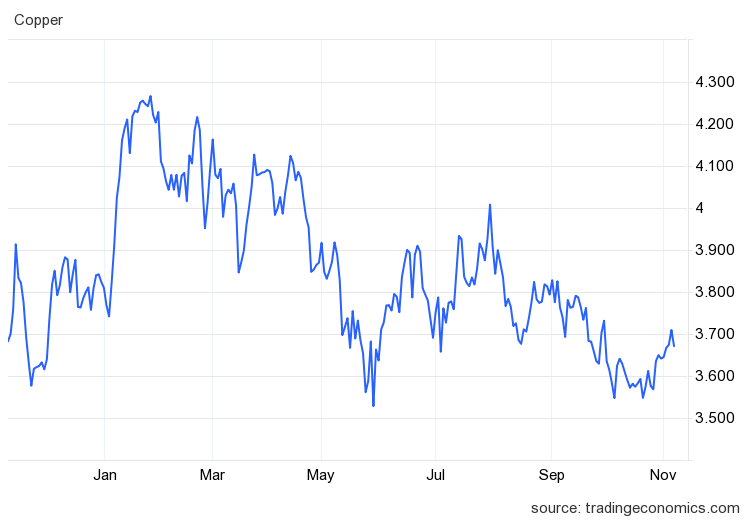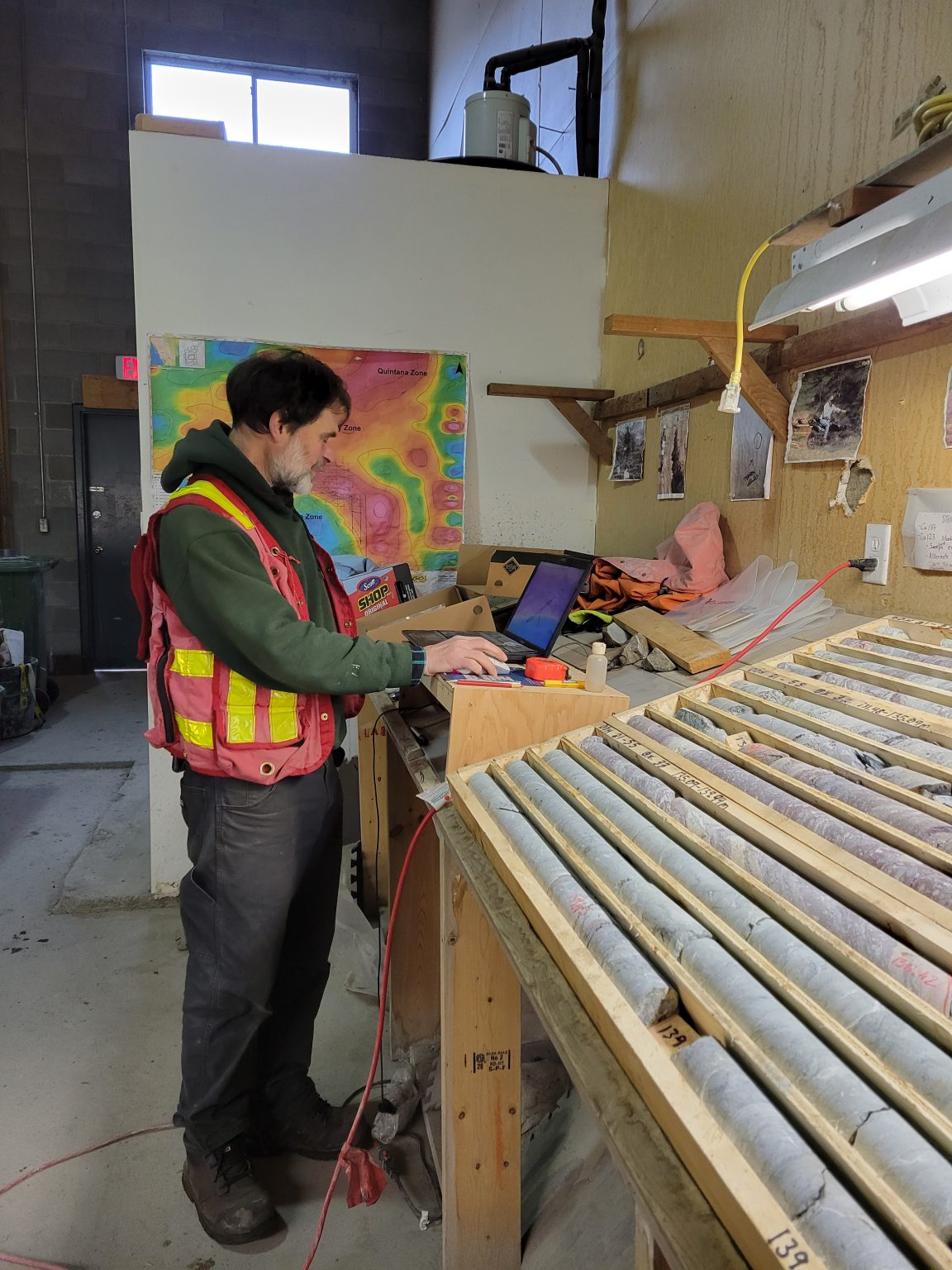Sego Resources set to benefit from the next copper supercycle

By Ian Foreman
The term ‘copper supercycle’ refers to an extended and cyclical period of rising demand, prices, and production of copper. This phenomenon typically spans several years, or even a decade. It’s driven by various factors, including rapid industrialization, technological advancements, and global infrastructure development. As copper is a crucial industrial metal used in electrical wiring, electronics, and construction, its supercycle is linked to economic growth. During a supercycle, copper prices tend to increase as supply struggles to meet growing demand. The term highlights the long-term nature of copper’s market dynamics, with bullish trends lasting for extended periods before eventually stabilizing or declining.
 The last copper supercycle occurred in the mid-2000’s and several speculators etched themselves into the lore of mineral exploration by betting on copper projects whilst the market paid little to no attention. That last copper supercyle was primarily driven by the rapid industrialization of China and increasing global demand for copper in various sectors that were rapidly growing at the time. Today, copper prices continue to experience an upward trend due to increased demand for electric vehicles and renewable energy, suggesting the potential for a supercycle.
The last copper supercycle occurred in the mid-2000’s and several speculators etched themselves into the lore of mineral exploration by betting on copper projects whilst the market paid little to no attention. That last copper supercyle was primarily driven by the rapid industrialization of China and increasing global demand for copper in various sectors that were rapidly growing at the time. Today, copper prices continue to experience an upward trend due to increased demand for electric vehicles and renewable energy, suggesting the potential for a supercycle.
A copper supercycle is a complex and long-term phenomenon. The interplay of multiple factors and conditions typically need to align over an extended period of time in order for a copper supercycle to form. These key factors and conditions include:
- Strong Global Demand: A sustained increase in global demand for copper is essential. This can be driven by factors such as rapid industrialization, urbanization, and the increasing adoption of technologies that rely on copper, such as electric vehicles and renewable energy.
- Supply Constraints: A constraint in the supply of copper can be a result of production disruptions, geological limitations or challenges in bringing new mining projects online.
- Economic Growth: The health of the global economy plays a significant role. Strong economic growth, particularly in emerging markets, tends to boost demand for copper.
- Technological Advancements: Innovations in various industries that expand the applications of copper or newly discovered uses for copper can create a sustained increase in demand.
- Geopolitical Factors: Geopolitical stability in major copper-producing regions is crucial as political instability or trade disruptions can impact supply.
- Infrastructure Development: Large-scale infrastructure projects, such as those in construction or energy, can drive demand for copper.
- Investor Sentiment: Positive investor sentiment and speculative investments can contribute to price increases.
- Global Trends: Factors such as climate change awareness, electrification of transportation, as well as the transition to renewable energy sources can have a profound impact on copper demand.
Add an extra Canadian element to these factors – the Canadian Critical Minerals Strategy. The Canadian Critical Minerals Strategy was implemented in 2022 with the goal to enhance domestic production and reduce the reliance on foreign sources for critical minerals. The Strategy includes 31 minerals that range from antimony to vanadium but, it initially prioritized several minerals due to their distinct potential to spur Canadian economic growth and their necessity as inputs for priority supply chains. These prioritized minerals are lithium, graphite, nickel, cobalt, copper, and rare earth elements.
 Sego Resources Inc. [TSXV-SGZ] is positioning itself to benefit from these factors that have revitalized the copper sector. Sego’s wholly owned Miner Mountain copper and gold property is located in southern British Columbia’s copper porphyry belt. The property is made up of 15 mineral claims that cover a total area of 2,056.54 hectares (or 20.57 square kilometres).
Sego Resources Inc. [TSXV-SGZ] is positioning itself to benefit from these factors that have revitalized the copper sector. Sego’s wholly owned Miner Mountain copper and gold property is located in southern British Columbia’s copper porphyry belt. The property is made up of 15 mineral claims that cover a total area of 2,056.54 hectares (or 20.57 square kilometres).
The Miner Mountain property 15 kilometres north of the Copper Mountain Mine, which is 75 percent owned by Hudbay Minerals Inc. [TSX-HBM] with the remainder owned by Mitsubishi Materials Corp. [JPX-5711]. Hudbay became the third-largest copper producer in Canada with its acquisition of Copper Mountain Mining Corp. in April of 2023, which was valued at US$439 million. The Copper Mountain Mine is a large operation with production of 45,000 tonnes per day. The mine’s resource estimate includes a measured resource 597 million tonnes grading 0.23 percent copper, 0.10 grams per tonne gold, and 0.71 grams per tonne silver; an indicated resource of 535 million tonnes grading 0.20 percent copper, 0.09 grams per tonne gold, and 0.57 grams per tonne silver; and an inferred resource of 446 million tonnes grading 0.19 percent copper, 0.09 grams per tonne gold, and 0.54 grams per tonne silver.
The Copper Mountain Deposit and Sego’s Miner Mountain property share similar geology as both are hosted in the east facies of the Nicola Group, which makes up an important part of the Mesozoic Quesnel Terrane.
 The region is centered on Princeton, a town with a rich mining history. Exploration in the area dates back to the early 1900’s. Recent exploration within the Princeton area has been increasing over the past decade and there are a number of companies that are actively exploring for copper within a radius of 30 kilometres from the town. The Miner Mountain property is located only a couple of kilometres east of the town of Princeton.
The region is centered on Princeton, a town with a rich mining history. Exploration in the area dates back to the early 1900’s. Recent exploration within the Princeton area has been increasing over the past decade and there are a number of companies that are actively exploring for copper within a radius of 30 kilometres from the town. The Miner Mountain property is located only a couple of kilometres east of the town of Princeton.
“Most projects are in very isolated areas. Our project has great infrastructure and access as well as being located near a community that wants more mines” stated Sego Resources CEO, J. Paul Stevenson.
The first documented exploration on what is now the Miner Mountain property was in 1908 when United Empire encountered oxide copper in slide material while exploring for coal. Exploration continued sporadically up to 2007 when Sego acquired the property. Sego has applied systematic exploration techniques that included several mapping and trenching programs, geophysical studies as well as drill campaigns.
To date the company has identified six target areas within the property: the North Zone, the Quintana Zone, the Regal-Dorothy Zone, the Cuba Zone, and the Southern Gold Zone. Of these it is the Cuba Zone and the Southern Gold Zone that have seen a bulk of the work performed to date due to Sego successfully identifying zones of higher-grade mineralization in the Cuba Zone (e.g. drill hole MM12- 21 with 100.39 metres grading 0.95 percent copper and 0.55 grams per tonne gold as well as drill hole MM17-29 with 21 metres grading 1.17 percent copper, 0.30 grams per tonne gold) and in the South Zone (trench 42, which returned 10 metres of hydrothermal breccia grading 1.18 percent copper)
The mineral assemblage and alteration within the Miner Mountain Property suggests that the currently defined mineralization represents the upper expression of an alkali-rich hydrothermal system. High grade copper mineralisation has been observed in drill core over a strike length of 450 metres. This mineralisation appears to be open along strike in both directions as it is within an IP chargeability feature that is 1,200 metres in length.
The Southern Gold Zone is very similar to the geological setting of the recently recognized gold zone at New Gold Inc.’s [TSX-NGD] New Afton Mine. At New Afton the gold zone is distal and lateral to the main copper-gold mineralization and a similar setting has been proposed for the Southern Gold Zone. Drilling is planned to test associated deep alkalic porphyry copper-gold mineralization to the north.
Recent compilation and a full data review by Sego has identified a flat fault under the Cuba Zone. This shallow dipping structure is interpreted to have off-set mineralization and explains the 11 metres of mineralization grading 0.6 percent copper and 0.13 grams per tonne gold that was intersected at the bottom of drill hole 37, which was drilled in 2019. This now represents a compelling new target that the company plans to test with its next drill program.
“We have two very good comparables for our mineralization. Whereas the Southern Gold Zone has many similarities to New Afton; the age, type of intrusion and structure of the Cuba Zone are more analogous to Copper Mountain”, stated Mr. Stephenson. “Alkalic deposits tend to smaller but can be richer as they can have higher gold grades.”
The forecasted continuing strength of the copper market and the potential for a copper supercycle bodes well for Sego Resources and their determined exploration at Miner Mountain. The potential for new zones of copper and gold mineralization at depth has created an intriguing story that those working in the area are paying close attention to.
